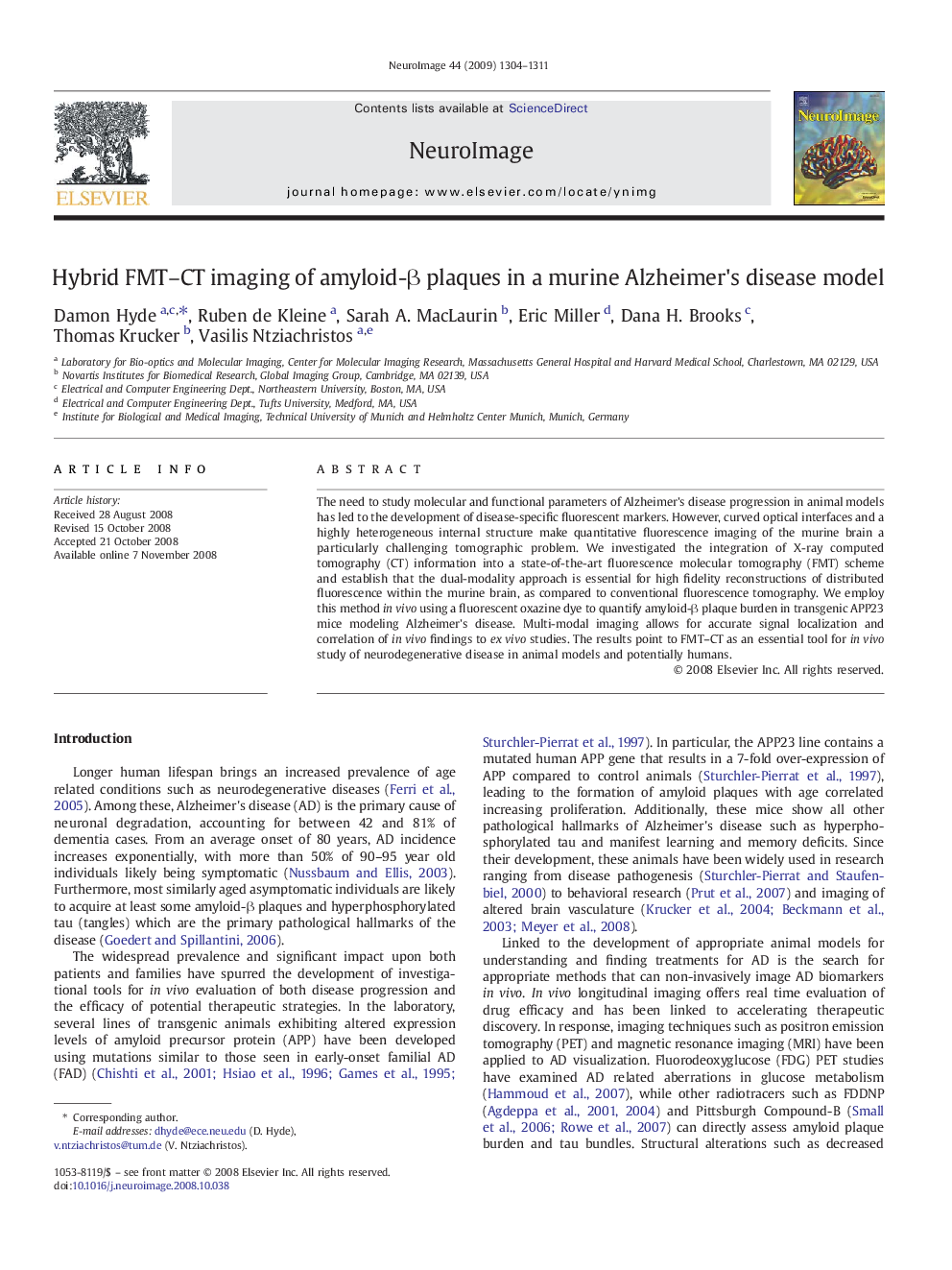| Article ID | Journal | Published Year | Pages | File Type |
|---|---|---|---|---|
| 3072457 | NeuroImage | 2009 | 8 Pages |
The need to study molecular and functional parameters of Alzheimer's disease progression in animal models has led to the development of disease-specific fluorescent markers. However, curved optical interfaces and a highly heterogeneous internal structure make quantitative fluorescence imaging of the murine brain a particularly challenging tomographic problem. We investigated the integration of X-ray computed tomography (CT) information into a state-of-the-art fluorescence molecular tomography (FMT) scheme and establish that the dual-modality approach is essential for high fidelity reconstructions of distributed fluorescence within the murine brain, as compared to conventional fluorescence tomography. We employ this method in vivo using a fluorescent oxazine dye to quantify amyloid-β plaque burden in transgenic APP23 mice modeling Alzheimer's disease. Multi-modal imaging allows for accurate signal localization and correlation of in vivo findings to ex vivo studies. The results point to FMT–CT as an essential tool for in vivo study of neurodegenerative disease in animal models and potentially humans.
